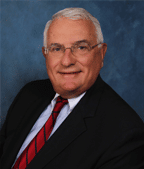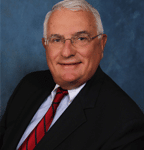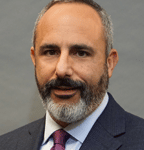General Jurisdiction and Multijurisdictional Practice Following Daimler AG v. Bauman
By Wayne J. Positan
I. Introduction
Technology has made the world of lawyers a smaller, more interconnected place, with multijurisdictional practice across state and national boundaries now commonplace. Still, to borrow a line from Dorothy, often there’s no place like home when establishing personal jurisdiction for malpractice defense of a law firm or attorney in a transnational or interstate matter.
In light of recent case law developments, some corporations and multistate law firm defendants now face better odds of transferring claims by out-of-state plaintiffs to a preferred home jurisdiction on general jurisdiction grounds. Plaintiffs in such cases who are reluctant to bring suit where the activities giving rise to the claim actually occurred no longer can simply pick any forum (such as plaintiff’s home forum) where the defendant has been doing business generally. Now, for general jurisdiction to attach to defendants in such cases, the forum state must, with few exceptions, be either the state of incorporation or the headquarters location of the defendant. Consequently, the plaintiff’s opportunity to engage in forum shopping has been significantly limited. For law firm and attorney defendants, better odds of defending in the home jurisdiction may offer the great advantage of conserving litigation resources and reducing uncertainty.
This article will examine the impact of the United States Supreme Court decisions in Goodyear Dunlop Tires Operations, S.A. v. Brown, 131 S. Ct. 2846 (2011) and Daimler AG v. Bauman, 134 S. Ct. 746 (2014), as they relate to malpractice suits against law firms engaged in multijurisdictional practice. Here the term “multijurisdictional” refers to either transnational practice or practice in more than one US state, district, or territory either in litigation or transaction matters. The developments in Daimler and Goodyear ultimately will be beneficial to many prospective defendants from a liability risk standpoint. But in order to limit the number of jurisdictions in which a multistate law firm is properly considered “at home,” multistate law firms would be well advised to have a clearly defined headquarters, and to consider locating the firm’s headquarters in the state of registration or incorporation.
II. A Civil Procedure Refresher
As a brief civil procedure refresher, jurisdiction over a nonresident defendant can only be asserted where it is consistent with the Due Process Cause and is authorized by a state long-arm statue. The due process hurdle is met where either general or specific jurisdiction is established. General jurisdiction allows the nonresident defendant to be sued in a forum state, irrespective of the nature of the cause of action and even if the factual allegations are not connected with the defendant’s forum-state-related activities. International Shoe v. State of Washington, 326 U.S. 310, 320 (1945). Instead, general jurisdiction was traditionally established through the court’s analysis of all “systematic and continuous” affiliations of the nonresident defendant with the forum state. Id. On the other hand, specific jurisdiction over a nonresident defendant exists where the actual claims at issue in the suit arise out of the defendant’s actual contacts with the forum state. Helicopteros Nacionales de Colombia. S.A. v. Hall, 466 U.S. 408, 414 (1984). The specific jurisdiction inquiry focuses solely upon whether the nonresident defendant’s contacts with the forum state serve as the basis of the cause of action, and no consideration is given to the extent and nature of the foreign defendant’s unrelated contacts to the forum state. Id.
In a very significant departure from precedent on the controlling jurisdiction analysis, in Goodyear and Daimler, the Supreme Court clarified that a multistate corporation will generally only be subject to suit in the state where it is incorporated or where its headquarters is located. This change in jurisdictional jurisprudence has critical implications for multistate law firms or law firms engaged in multijurisdictional practice, in connection with legal malpractice claims brought by out-of-state plaintiffs. By doing away with decades of federal and state jurisprudence, the Supreme Court has limited the prior “presence jurisdiction” standard and shifted the focus to whether a corporation or partnership can reasonably be considered “at home” in the forum state. For a corporation, “the place of incorporation and the principal place of business are considered the paradigm ‘bases’ for general jurisdiction.” Daimler, supra, 134 S. Ct. 746, 760 (quoting Goodyear, supra, 131 S. Ct. 2846, 2854). Following Daimler, courts have applied the “at home” standard to law firm defendants, whether they are organized as limited liability companies or as professional corporations. A court may assert jurisdiction over a case-in-controversy where either general or specific jurisdiction is established. However, a plaintiff may be able to successfully oppose transfer on specific jurisdiction grounds, if the conduct which forms the basis of the plaintiff’s claim arises from the defendant-attorney’s purposeful availment of the laws of the forum state.
It must be noted that the Daimler decision does not alter the standard for establishing specific jurisdiction over a law firm defendant. Where a law firm purposefully directs its activities to the forum state and the malpractice cause of action arises from those actions, a plaintiff can properly obtain specific jurisdiction over a law firm defendant in the forum state. Further, the locus of the underlying litigation or the transaction giving rise to the claim will generally be sufficient to allow the exercise of specific jurisdiction over the law firm in the forum state.
But following Daimler, issues surrounding the exercise of general jurisdiction over a law firm defendant are open to reexamination. As multijurisdictional practice becomes more common due to the ease of interstate travel and Internet communication, the frequency with which an aggrieved client may seek to initiate a legal malpractice complaint in its home jurisdiction will also rise. This change in law has implications for forum shopping by plaintiffs as well as the time and expense of defending a malpractice action in a distant or unfriendly jurisdiction. This article will explore the new contours of the exercise of general jurisdiction against law firm defendants following Goodyear and Daimler.
III. The Daimler AG v. Bauman Decision
In Daimler, the Supreme Court put an important gloss on the Goodyear decision, refining the rule as to where exactly, a corporation’s “home” is, for general jurisdiction purposes. In Goodyear, where the Supreme Court established the “systematic and continuous contacts” test of general jurisdiction, the Court reversed a North Carolina court’s assertion of jurisdiction over the foreign subsidiaries of a U.S. tire manufacturer. The plaintiffs were the parents of two North Carolina minors that were killed in a bus crash in France, and it was alleged that the crash was caused by a defective tire manufactured by the foreign subsidiaries. Id. at 2850-2851. The plaintiffs argued that general jurisdiction could be exercised over the foreign subsidiaries because their products reached North Carolina through the stream of commerce. Id. at 2852. The Supreme Court held that jurisdiction could not be established over the foreign subsidiaries in this manner, reasoning that a plaintiff seeking to establish general jurisdiction must demonstrate a foreign defendant’s continuous corporate operations within a state, so substantial and of such a nature as to render them essentially at home in the forum state. Id. at 2855. The Goodyear decision, in part, shifted the focus from the nature of the contacts, to whether the corporation could reasonably be considered “at home” in the forum state, based upon these circumstances.
In Daimler AG v. Bauman, 134 S. Ct. 746, 760-761 (2014), the US Supreme Court further modified the “systematic and continuous” standard in its analysis of general jurisdiction, and clarified precisely where a corporation will be considered “at home.” There, the plaintiffs, twenty-two Argentina residents, filed suit against a German corporation, Daimler, claiming that its wholly owned subsidiary collaborated with Argentina’s state security forces during the 1976-1983 “Dirty War,” leading to the detention, torture, and death of Argentina residents, including the plaintiffs and their relatives, who were employed by Daimler’s subsidiary. Id. at 750-751. The question before the Supreme Court was whether Daimler’s affiliations with the State of California were sufficient to subject it to the general jurisdiction in California.
The Supreme Court reasoned that “only a limited set of affiliations with a forum will render a defendant amenable to all-purpose jurisdiction” in the forum state and determined that general jurisdiction in California was improper. Id. at 760. “[W]ith respect to a corporation, the place of incorporation and principal place of business” are the paradigm “bases” for general jurisdiction. Id. This holding rejected the traditional standard expansively allowing the exercise of general jurisdiction in every state in which a corporation “engage[d] in a substantial, continuous and systematic course of business.” Rather, the Court clarified, citing Goodyear, “[T]he proper inquiry, this Court has explained, is whether a foreign corporation’s “affiliations with the State are so ‘continuous and systematic’ as to render [it] essentially at home in the forum State.” Goodyear [reporter citation omitted]. The Daimler court further reasoned: “Neither Daimler nor [its affiliate] MBUSA is incorporated in California, nor does either entity have its principal place of business there. If Daimler’s California activities sufficed to allow adjudication of this Argentina-rooted case in California, the same global reach would presumably be available in every other State in which MBUSA’s sales are sizable. No decision of this Court sanctions a view of general jurisdiction so grasping.” The Court in Daimler thus greatly limited those jurisdictions where a defendant corporation or partnership that is operating in multiple jurisdictions could be deemed subject to general jurisdiction.
While the place of incorporation and the location of the headquarters were referred to as the primary “bases” for an exercise of general jurisdiction, the Supreme Court did not foreclose the possibility that a corporation’s “operations in a forum other than its formal place of incorporation or principal place of business may be so substantial and of such a nature as to render the corporation at home in that State.” Id. at 761 n. 19.
Some courts have specifically interpreted Daimler as effecting a drastic change in the law affording corporate defendants a previously unavailable personal jurisdiction defense. See Gucci America, Inc. v. Weixing Li, 768 F.3d 122, 135 (2d Cir. 2014); 7 W. 57th St. Realty Co., LLC v. CitiGroup, Inc., 2015 U.S. Dist. LEXIS 44031, *22 (S.D.N.Y. Mar. 31, 2015). The new recitation of the standard “bases” for general jurisdiction set forth in Daimler has significant implications for multi-state law firms and law firms engaged in multijurisdictional practice.
IV. Specific Jurisdiction
Any general jurisdiction analysis applying Daimler and Goodyear to attorney liability in a multijurisdictional practice setting, should start with recognition that the established legal standard for specific jurisdiction was not adjusted by the new rule. Provided that the selected forum state’s long arm statute permits personal jurisdiction over nonresidents to the extent allowed by the Due Process Clause of the Fourteenth Amendment, the issue turns upon whether the exercise of jurisdiction comports with due process. Specific jurisdiction over a defendant is satisfied where the defendant purposefully avails himself or herself of the laws of the forum state. Burger King Corp. v. Rudzewicz, 471 U.S. 462, 475 (1985). In general, where an attorney purposefully directs his activities to the forum state and the cause of action arises from those contacts, specific jurisdiction in the forum state will attach for a malpractice claim arising from those activities. See, e.g., Reliance Steel Products Co. v. Watson, Ess, Marshall & Enggas, 675 F.2d 587, 589 (3d Cir. 1982). However, specific jurisdiction over a nonresident defendant must arise from contacts the defendant itself has created with the forum state, as the “plaintiff cannot be the only link between the defendant and the forum.” Walden v. Fiore, 134 S. Ct. 1115, 1121 (2014).
Thus, where an out-of-state attorney appears pro hac vice in a matter in the forum state, it has been held there is a near presumption that specific jurisdiction is appropriate in claims arising from the matter in which the attorney was admitted pro hac vice. Jackson v. Kincaid, 122 S.W.3d 440, 449-450 (Tex. App. 2003) rev’d on other grounds. The procedural rules of some jurisdictions require that attorneys being admitted pro hac vice consent to the jurisdiction in the state for disciplinary matters or malpractice suits arising from the case in which pro hacvice was granted. Mississippi Rule of Appellate Procedure 46(6) (requiring an attorney to submit an affidavit consenting to jurisdiction); New Jersey Court Rule 1:21(2)(c)(2) (requiring an order appointing the Clerk of the State Supreme Court as agent for service upon pro hacvice attorney). Even when an attorney is admitted pro hac vice in a related case, if a nexus exists between the defendant attorney’s pro hac vice admission in the forum state and the underlying cause of action asserted by the legal malpractice plaintiff, specific jurisdiction may properly be exercised in the forum state. See Klein Frank, P.C. v. Girards, 932 F. Supp. 2d 1203, 1211 (D. Colo. 2013).
V. General Jurisdiction Applied
a. Introduction
As noted above, following Goodyear and Daimler, general jurisdiction can only be exercised over a corporate defendant if the defendant is reasonably considered at home in the forum state, which is interpreted as either the place of incorporation of the location of the headquarters. While Goodyear and Daimler involved corporations, recent precedent suggests that their holdings will apply equally to law firms organized as limited liability partnerships or professional corporations. See Cromenas v. Morgan Keegan & Co., Inc., No. 2:12-CV-04268-NKL, 2014 WL 1375038, at * 13-15 (W.D. Mo. Apr. 8, 2014)(dismissing suit against limited liability partnership based upon lack of contacts with forum state). Despite the manner in which legal malpractice complaints are frequently pled, general jurisdiction over a defendant law firm cannot be established on the basis of the residency or location of the claimant or the unilateral actions of a third party. See Keeton v. Hustler Magazine, Inc., 465 U.S. 770, 775 (1984). Contact with attorneys via phone or email is generally considered insufficient to trigger jurisdiction over an attorney. E.g., Porter v. Berall, 293 F.3d 1073, 1076 (8th Cir. 2002).
b. Residency/Bar License of a Partner in the Forum State
Plaintiffs frequently seek to exercise general jurisdiction over an out-of-state law firm based upon the residency or possession of a law license by one or multiple partners in the forum state. Based upon the decisions in Goodyear and Daimler, it appears that such contentions, on their own, would be insufficient to trigger general jurisdiction, as they would not reasonably establish that the firm would be considered “at home” in the forum state. In Cromenas v. Morgan, the plaintiff asserted that general jurisdiction was proper over an out-of-state law firm in Missouri because four of the approximately 800 attorneys possessed active Missouri bar licenses. Id. at *12. The plaintiffs based this argument upon standard partnership principles, arguing that the activities of one partner are generally attributable to the partnership. Id. at *12-13. A Missouri district court held that general jurisdiction over the firm was improper based upon the possession of a Missouri bar license by four members of the firm. Id. The Cromenas court clarified that if a partner of the firm possessed a Missouri bar license and utilized that license to practice law within Missouri, then specific jurisdiction would be proper “by reason of the activities.” (citations omitted). The Court reasoned that general jurisdiction was improper because the complaint was “not related in any manner to the Missouri bar licensed partners’ contacts with Missouri.” Id. at 13.
Prior to Goodyear and Daimler, the mere residency of a partner, without further contacts, was generally considered insufficient to trigger general jurisdiction in the forum state. E.g., Pappas v. Arfaras, 712 F.Supp. 307, 311 (E.D.N.Y.1989) (“mere fact” that limited partners of defendants were New York citizens does not amount to purposeful activity within the state); Citibank, N.A. v. Estate of Simpson, 676 A.2d 172, 177 (N.J. App.Div. 1996) (personal service of partner unrelated to transaction in New Jersey was insufficient establish general jurisdiction). Given the newly announced focus upon whether the partnership is considered “at home” in the forum state, the existence or presence of a minority of unrelated partners in the forum state is also unlikely to subject the partnership to general jurisdiction in the forum state.
c. Clients and Solicitation in Forum State
Goodyear and Daimler and their progeny also now appear to preclude establishment of general jurisdiction over a foreign law firm on the grounds that the defendant firm has represented other clients – besides plaintiff – located in the forum state or directing marketing efforts toward potential clients in the forum state. It is well established that representation by an out-of-state law firm does not, by itself, establish general jurisdiction in the home state of the client. E.g., Dillon v. Murphy & Hourihane, LLP, No. 14-cv-01908-BLF, 2014 WL 5409040, at *4 (N.D. Cal. Oct. 22, 2014). A Nevada federal district court, in declining to exercise general jurisdiction over a California law firm, drew an important distinction between “doing business” in a state and being considered “at home” in a state. Couvillier v. Dillingham & Assoc., No. 2:14-cv-00482-RCJ-NJK, 2014 WL 3666694, at *3 (D. Nev. July 23, 2014). Moreover, in light of the Goodyear and Daimler decisions, the fact that a firm represents unrelated clients in the forum state is insufficient to ascribe general jurisdiction to the firm in the forum state. See Cromenas, supra, 2014 WL 1375038, at *13-14. Interestingly, the Couvillier court did not directly explain its application of Daimler’s jurisdictional language regarding the home state of a corporation to a California law firm. The Nevada District Court merely noted “[t]here is no general personal jurisdiction over Dillingham, a California law firm, in Nevada, because Dillingham is not alleged to be ‘at home’ in Nevada, but is only alleged to ‘do[] business’ in Nevada, however extensively.” It should be qualified that this change in law only relates to general jurisdiction and is therefore somewhat limited. Specific jurisdiction is likely to apply to any circumstances where a foreign law firm engages in the representation of a client concerning a legal issue within the forum state and the complaint arises from that set of circumstances.
Practitioners should also be aware that how the defendant law firm is organized may be relevant to the extent that it relates to so-called “tag jurisdiction.” In the past, physical presence of a foreign individual defendant in a state was sufficient to confer personal jurisdiction. Burnham v. Superior Court, 495 U.S. 604, 619 (1990). In First American Corp. v. Price Waterhouse LLP, 154 F.3d 16 (2d Cir. 1998), a preDaimler case, the Second Circuit U.S. Court of Appeals allowed general jurisdiction over a partnership based on in-state service on one of its partners. In contrast, courts have refused to allow tag jurisdiction where personal service is effected on a director or officer of a corporation while that individual is physically present in the forum state. See Martinez v. Aero Caribbean, 764 F.3d 1062, 1069-70 (9th Cir. 2014); Topnotch Tennis Tours, LLC, 2014 U.S. Dist. Lexis 160271, *6-7 (E.D.N.Y., November 14, 2014). In reaching the holding that the “at home” standard articulated in Daimler is not satisfied where an officer is personally served in the forum state, in Martinez the Ninth Circuit explicitly did not extend the decision to partnerships stating “partnerships differ from corporations in the important respect that a partnership (unlike a corporation) has no separate existence from its partners.” Martinez, supra, 764 F.3d at 1069 (internal quotations omitted). In this regard, practitioners seeking to invoke the Daimler defense to personal jurisdiction for a law firm organized as a professional corporation or limited liability partnership might consider analogizing that entity to a corporation, to distinguish it from a partnership.
Prior to Daimler, in some jurisdictions, a defendant’s solicitation of business in the forum state was considered a factor supporting a sufficient-contacts finding in the forum state and the exercise of general jurisdiction. E.g., Grynberg v. Ivanhoe Energy, Inc., 490 Fed. Appx. 86, 95 (10th Cir. 2012) (solicitation of business is a factor considered by a court considering general jurisdiction). While the issue has not been conclusively resolved in a majority of jurisdictions, the fact a law firm actively solicited business in the forum state should not support general jurisdiction under the new “at home” jurisdictional standard advanced by Daimler. It appears fully consistent with Daimler that a law firm’s active solicitation of business in another jurisdiction should not influence the analysis of that firm’s “home” state, for general jurisdiction purposes. Again, the home state for these purposes will typically be the state of incorporation/registration or the location of the headquarters.
d. The Ramifications of Temporary Practice and Appearance in Forum State
Prior to Daimler and Goodyear, evidence that attorneys from a foreign law firm were admitted pro hac vice into the state or federal courts of the forum state was insufficient to establish general jurisdiction over the law firm. See, Cerberus Partners, L.P. v. Gadsby & Hannah, LLP, 836 A.2d 1113, 1116 (R.I. 2003) (multiple pro hac vice appearances by a national law firm were deemed insufficient to establish general jurisdiction in Rhode Island); Wolk v. Teledyne Indus., Inc., 475 F.Supp.2d 491, 502 (E.D. Pa. 2007) (pro hac vice appearance in an unrelated matter in the forum state failed to establish general personal jurisdiction”). The “at home” standard of Daimler further supports this determination, as the act of seeking approval for pro hac vice admission and affiliating with local counsel for a specific case confirms that the firm cannot be reasonably considered “at home” in the forum state and therefore subjected to all-purpose jurisdiction on unrelated matters. See Cromenas, supra, 2014 WL 1375038, at *12 (limited and primarily pro hac vice appearances in Missouri do not suggest that a law firm . . . is at home in Missouri).
However, following Daimler, courts have clarified that jurisdiction by consent of the defendant remains a valid and binding method for asserting jurisdiction. In Senju Pharm. Co., Ltd. v. Metrics, Inc., 2015 U.S. Dist. LEXIS 41504, *22 (D.N.J. Mar. 31, 2015), a District Court held that service was proper where the nonresident defendant had an agent authorized to accept service within the forum state. The Court made a distinction, however, between registering to do business in the state and accepting service in the state by an authorized agent, and noted that registering to do business in a state, without service upon a registered agent would likely not be sufficient to trigger consent jurisdiction. Id.
VI. Conclusion
Under Daimler, there is some leeway for consideration of the totality of the circumstances and the specific factors giving rise to the plaintiff’s assertion of general jurisdiction. The place of incorporation/registration and the location of the firm’s headquarters, however, are considered the paradigm “bases” for jurisdiction. In light of Goodyear and Daimler and their progeny, law firm defendants and defense counsel would be well guided to consider jurisdictional issues at the outset of cases and consider jurisdictional motions to dismiss in order to litigate in more appropriate and convenient “home” forums. The mere existence of multijurisdictional practice under ABA Model Rule 5.5 does not mean an attorney or law firm will be subject to general jurisdiction in each jurisdiction where practice occurs. In order to limit the number of jurisdictions in which a multistate law firm is properly considered “at home,” multistate law firms would be well guided to have a clearly defined headquarters, and to perhaps ensure that the headquarters is located within the state of registration or incorporation. And it should be noted that a forum selection clause in an attorney engagement agreement is another effective tool, permissible in many jurisdictions, for removing or reducing uncertainty as to eventual forum, in the event of a subsequent legal malpractice claim. See XR Co. v. Block & Balestri, P.C., 44 F. Supp. 2d 1296, 1300 (S.D. Fla. 1999). The developments in Daimler and Goodyear are ultimately beneficial from a risk liability standpoint, as a plaintiff’s ability to engage in forum shopping has been significantly limited, and some of the uncertainty concerning where a case will proceed has been curtailed.
Published in The Professional Lawyer, Volume 23, Number 3, ©2016 by the American Bar Association. Reproduced with permission. All rights reserved. This information or any portion thereof may not be copied or disseminated in any form or by any means or stored in an electronic database or retrieval system without the express written consent of the American Bar Association.


















